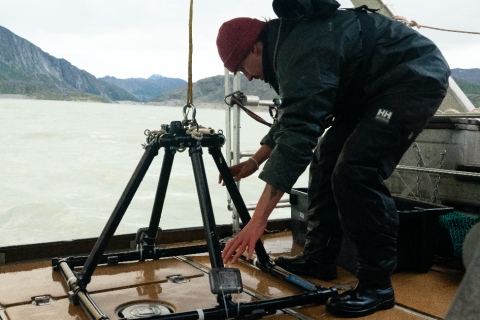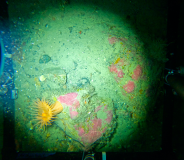« The photo/video frame makes it possible to observe epibenthic organisms in situ, i.e. in their natural living environment. Some organisms are difficult to identify when they are brought up because they may have been degraded, such as jellyfish, for example. The photo/video frame allows us to observe and record the presence of these organisms without having to bring them up.
On a larger scale, the photo/video frame will provide a picture of epibenthic biodiversity and abundance by surface of the Greenlandic fjords sampled.
In each fjord sampled, 12 drop cameras were used. The frame must be lowered gently to limit the upwelling of sediment that would occur if the frame reached the bottom too quickly. When the frame reached the bottom, we waited a minute to allow the sediment to settle and provide a clear image. »
*Dr. Philippe Archambault (PhD) is a Professor in the Department of Biology at Université Laval, in Québec City. He is also a Scientific Director of the Canadian Network of Centers of Excellence, ArcticNet. He is a researcher who strives to link fundamental biodiversity questions and theoretical research on global change and its effects on ecosystems functioning to applied science and policy-making.He is strongly engaged in training the next generation of marine scientists.

Photo : @valentinproult




